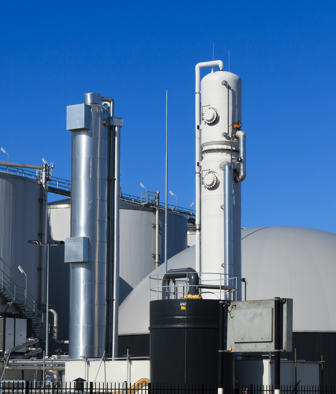Eurowind Energy enters the biogas market
Today, Eurowind Energy is primarily dedicated to supplying local and global needs for renewable energy with electricity generated by wind turbines and solar PV. But there is still a need for gas in certain industries that cannot be electrified.
Eurowind Energy’s vision is for simple, sustainable, and locally produced energy and now the company is extending that vision to include biogas. A new competence centre for biogas has been established to complement the existing solar, wind and PtX competence centres.
“We see biogas as an important building block for our energy centres. We already have the power from our solar and wind parks. It makes sense to combine and let these elements work together in a closed system. That way we can reduce the strain on the infrastructure of both electricity and gas,” said Søren Rasmussen, deputy chairman of the board and one of the founders of Eurowind Energy.
Eurowind Energy is planning to establish large energy centres with various technologies, that will complement each other to support different needs. The Danish energy company is clear on the use of biogas: it should not have a role in heating domestic houses or be used to generate power but should be an alternative and necessary fuel for certain industries.
As of February 2023, Eurowind Energy has eight biogas projects under development in Denmark. However, the ambition is to develop a global pipeline of biogas projects, and construction on the first project is expected to begin in 2023/24. It is a logical next step for the company that already has the knowledge within the organization.
The location of a local biogas plant will depend on the need of the offtaker and the local infrastructure. And, like the wind and solar parks, Eurowind Energy will develop biogas projects in close contact with local communities.
Eurowind Energy biogas projects will prioritize the use of straw and other biomaterial. By using straw, it ensures that nutrients are preserved and will be returned to the soil. Burning straw removes the nutrients completely and should therefore be minimized.
“We can’t keep on burning material to produce energy. It’s a waste of resources. In the future, we must think about energy production in a whole new way – as sustainable, circular, and locally produced,” said Søren Rasmussen.
The gas will be produced without excessive use of accelerators even though this could prolong the gasification process from 40 to 100 days.
The biogas facilities will produce oxygen, CO2, biogas, and fertilizer, but the gases have the potential to be processed further, most likely in combination with hydrogen, to produce e-fuels, methanol etc. Furthermore, the gas can be processed into different products to be used in industrial production. The final products will depend, to a great extent, on the local offtaker.
Contact:
Malene Petersen,
Tel: +45 30 10 11 17
E-mail: [email protected]
Dummy link


